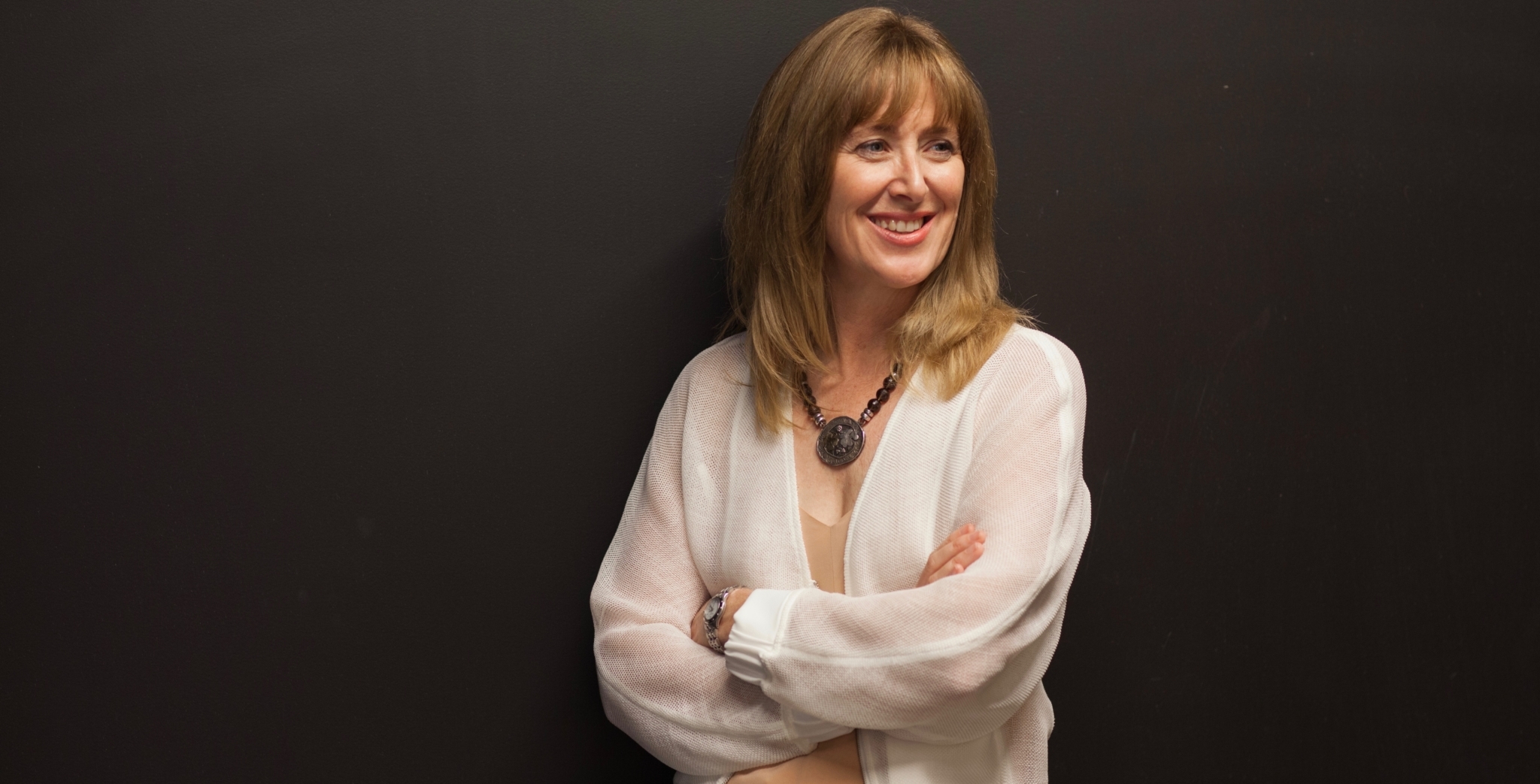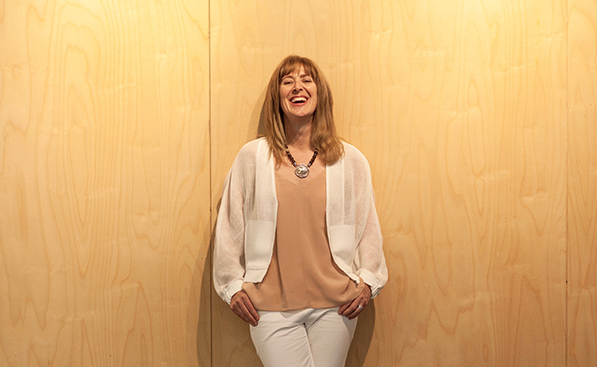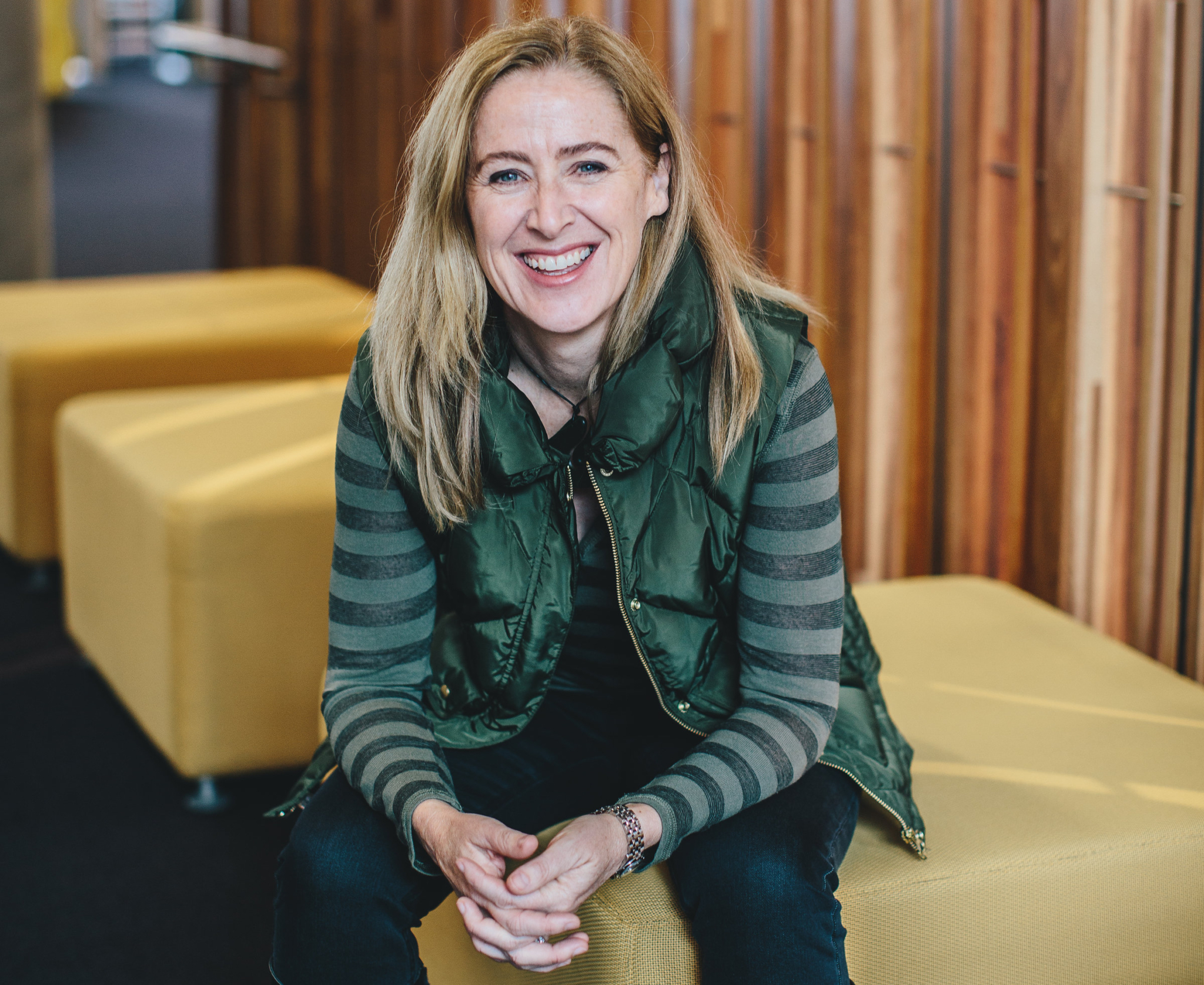When I consider my adult life, I’ve always wanted to live some version of an optimal life, so the focus on doing things that support this has been a conscious one for me. However, after a pretty tough season where I metaphorically landed on my bum with an uncomfortable thud, I realised that my life had changed in response to my aspirations but my habits hadn’t.
This was, initially, an uncomfortable reminder of the reality that we – our bodies, our planet and our universe – are in perpetual motion and changing constantly. The discomfort gave way to relief as I realised that a huge part of the unease that I’d experienced was unnecessary and that an upgrade for this new season, to be reviewed regularly thereafter, would make a big difference. It wasn’t clear to me initially just how much of a difference it would make, that goodness lay ahead of me.
Who we are and the life we currently have is a result of what we habitually do – good or bad. We each have a mix of habits that serve us well. These habits have been built over time. It may be hard to even remember how a habit started and for most it’s hard to describe the process by which it became embedded.
So when we decide an upgrade is needed, we can find ourselves stuck.
“Motivation to do anything that may at the outset be unpalatable is possible by connecting what we want to the ‘best-self’ version of ourselves.”

WHAT ARE HABITS?
Let’s start with a definition of what a habit is by paraphrasing one I think really captures it from the Oxford dictionary – a habit as a regular practice, that’s hard to give up. That last part is nasty when it comes to the habits that don’t serve us but for the ones that do, it’s fairly awesome. You see, once a habit is embedded it’s yours for life, if you want it.
THE BRAIN?
Thanks to the burgeoning field of neuroscience we have a precise understanding of how habits are formed. It’s useful to know the science as in simple terms, what this field clarified is that the brain, our performance machine, can be tinkered with by each of us. Very good news indeed and one that both proved and disproved the saying, ‘It’s just how I am’ (the inference being, it’s not possible to change).
For a fuller, more useful context, let’s take a simple but robust view of how the brain functions.
The brain has two major jobs – run everything and, keep us safe. On the first job, the brain does this beautifully without any help from us at all. Just consider that our heart keeps beating all day, every day, and that many of us will never even need to have that superb engine checked. So that’s the brain running our machine and all its components, but the brain also runs our behaviour, and this is how that works.
It’s as if when we’re born, the brain has a camera that constantly watches us. When it registers a repetition of anything – the neuroscientists reckon that it’s at about three repetitions – it starts the process of hardwiring the map, a map being whatever we repeat – how to ride a bike, brush our teeth, sit an exam, write, make a decision… to name a few of the billions of micro and big things we repeat moment to moment. Anything we repeat becomes a map and maps are thickened by repetition. With enough repetition, maps become hardwired and stored in a database for recall any time we need them, permanently.
Yes, this does mean habits we no longer need or want, but they can be replaced in terms of use by ones we do want.
STIMULUS/RESPONSE
So once formed, our habits sit in that database and as we go about our lives, the brain automatically serves us up our hardwired responses to the myriad stimuli that we encounter moment to moment. For this reason, neuroscientists are on record as stating we don’t have free will. Thankfully, they’re also on record clarifying that what we do have is ‘free won’t’.
You see, in the milliseconds after stimulus (something just happened…) and before response, we can tell the brain what to do or not to. If we continue to ignore the hardwired response, the alternative we replace it with grows stronger so we have alternatives in any given situation.
Consciously practicing stepping in between stimulus and response, moment to moment, will build the muscle of self-control and give us time to make the choices that best serve us.
One of the challenging habits that resulted from my childhood in many situations was anger. As I entered my career, there were some tricky times as I realised that this response was definitely not a winner. Suffice it to say, that wasn’t limited to my career – it affected big chunks of my whole life and not only did I not get what I wanted in those situations, I also felt awful afterwards. Apologising, a lot, was something I consequently got pretty good at – a not entirely welcome side effect.
Discovering this understanding from neuroscience was the best news ever for me and pivotal to my developing those useful alternatives. I’m pleased to report that the angry version of me hardly ever wins these days (though if you ever need to go to war, call me!).

“Something that will be important when replacing a habit that doesn’t serve us is to replace it with a compelling, useful alternative.”
HOW LONG DOES IT TAKE TO EMBED A HABIT?
KEYSTONE HABITS – START HERE
Keystone habits are like the giants of habits – they seem imbued with super powers. They are habits, that when embedded a whole lot of other habits are easier to do. One of the biggies in recent times for me was to get up when the alarm goes off. I could write lists and lists of things that resulted from doing just that one thing. So when we’re ready to take things to a new level, think first about what your keystone habit could be and prioritise embedding this first.
SELF-SABOTAGE HABITS
While our focus here is about how to create habits, making a commitment to stop doing something habitual is also powerful. Following our thinking about keystone habits, it’s definitely worth checking if we have any negative keystone habits in existence that if we stopped doing, would also destabilise other negative habits. This can also make embedding useful positive habits much easier.
REPLACE THE BAD HABIT WITH A GOOD ONE
Something that will be important when replacing a habit that doesn’t serve us is to replace it with a compelling, useful alternative. We keep doing bad habits because we genuinely get something from them, and it may not be clear to start with. Many smokers, for example, have identified that the thing they get from smoking that they really value is time out. If you can identify the benefit you get from doing the habit, then go to work with replacing that benefit – it will make stopping much easier.
WHY DO I WANT IT?
If I had to pick a part of the habit-building process that was more important than the others, it would be motivation. Motivation is critical to the building and embedding of habits. Psychology Today says, “Motivation is literally the desire to act and move toward a goal.”
It is a literal fact that humans do nothing without motivation, so you’ve got to wonder why the skill of accessing authentic motivation to apply to any situation is not taught at school. When we get that itch of dissatisfaction with the way things are, most of the time we know that it’s a good idea to make a change, to start or stop something, but we’ll often linger in the land of indecision or outright avoidance. This is often because the thing we know to do, isn’t in itself of great appeal. Stopping eating our fave foods, for example, or starting to exercise, or conveying a truth to a friend you think they may not want to hear, can feel like painful or unpleasant activities. It’s for this very reason we hear ourselves saying things like ‘I know I need to, must, should…’ do something – the knowledge is there, but the authentic motivation is not, so it doesn’t happen.
So how do we create motivation when we want to change but aren’t really feeling it? Well, this is where the good news is, but let me pause on the answer to consider an example in the mothering journey that’s an excellent case study. A mother will endure things that would be wildly unacceptable in any other role she plays. How is this possible? Because the love a mother has for her child transcends any pain enabling her to sustain that pain. Loving a child is the reward – it’s what she’s made to do and what for most brings unparalleled joy. Her motivation is innate, and it doesn’t get more authentic. But ask a mother if she wants to do all those things that amount to mothering and I doubt most would say ‘yes please’. Many of the tasks are utterly unpleasant. She does it because what she is committed to is so strong, and the reward so clear, and that is what enables her to continue day after day, year on year for a lifetime.
CREATE MOTIVATION
Motivation to do anything that may at the outset be unpalatable is possible by connecting what we want to the ‘best-self’ version of ourselves. This is the version of us that knows who we are most proud to be, the values we readily cling to and the behaviours we are most satisfied in doing.
So, for example, if you’re a business owner avoiding understanding the financials, you could gain motivation from connecting to how you will feel when you’re on top of these. That person understands how to get her business humming so she has more options for herself, her family and community – she’s a pretty awesome babe, one you’d be proud to be – so holding that vision of yourself will make the learning process much more sustainable.
For me, I created an anchor that would connect me to this version of myself any time I wanted it. The anchor is love – to be love at all times, in all situations, for myself and for others. It took me a while and a few versions to land on this, but the others were like stepping stones of great practice that brought me to that clarity. There is literally nothing I have to take on that isn’t easier when connected to that value.
To start you off on your journey toward clarifying your best self, get out a piece of paper and write down a description of your best self in as much detail as you can – include how you think, what you hold dear and what you’re doing when in this version of you. Next, look for the themes in what you’ve written down – it’s likely that there are consistent ideas about yourself that you’re reflecting – see if you can identify those.
Finally, see if you can summarise your thinking into a phrase or some key words that totally light you up, because when you consider them you feel stoked that that’s who you are. This can be your anchor.
This is what you return to every time you’re in upgrade mode with yourself.
Connecting any behaviour or action to this will be a key to embedding or deleting any habit.
“I’ve heard ‘perfect’ referred to as the lowest form of a goal as it’s not actually possible.”

100 PER CENT COMMITMENT
When we’ve decided on the action we want to take, the next step is to make a 100 per cent commitment to it. This point is more powerful than it may seem at a glance.
An all-in commitment is so much easier than any alternative – no reconsidering, no questioning, no wondering, no wasted time.
I speak here with some authority as I myself have been the queen of the ninety-something per cent commitment, and the time I wasted in revisiting my so-called commitment and the associated delays in getting what I truly wanted doesn’t really bear thinking about.
One hundred per cent is all in, every moment of every day doing what I’m committed to, over and over – feeling how I’m most stoked to feel all the time and getting the results I want faster. Hell, yes.
MAKE A PRE-COMMITMENT
A really wise part of the process of building habits is to consider the triggers, cues or potential derailers for our new commitment.
This is particularly important at the outset. If, for example, you’ve decided to give up/stop drinking alcohol, and an occasion is coming up where you might usually have an alcoholic beverage, it’s a good idea to plan what you will drink and how you will deal with that. Having a replacement for what you usually drink is something that can be thought about in advance.
Depending on how tough it may feel, it could also be a good idea to engage a buddy in your new commitment so they can support you. It’s also just that much harder to give in to the urge when you’ve got someone watching out for you. Making a pre-commitment will place us in the strongest position for our 100 per cent commitment.
DERAIL MOMENTS
You’re human and therefore imperfect, so derail moments will occur. As women our gender seems overly afflicted with some version of perfectionism that, not surprisingly, when queried none of us convincingly argue for.
I’ve heard ‘perfect’ referred to as the lowest form of a goal as it’s not actually possible – no exceptions.
Going for great/the best version of ourselves is quite a different thing, that is possible.
So for those moments when we get derailed, what we do is bring to mind that best version of ourselves, then ask her how to deal with ourselves and the situation; because it’s the best version we’re being, we’ll also be able to do it with compassion, and in full view of our commitment to this best-self version, simply step back into our commitment (no telling off, no shaming). Repeat.
AN ACE TOOL FOR EMBEDDING HABITS FASTER
So how long does it take to embed a habit? Well, the neuroscientists will go so far as to say that with enough focus and attention, habits can be embedded/hardwired within several weeks.
The only secret, they say, is that we must pay specific attention and practice a lot. That’s it.
With this in mind, we developed a tool that’s specifically about speeding up this process – it’s called the 3Qs Review (you’ll find a video on this if you log into the digital platform).
Neuroscience based, we developed the 3Qs tool as an aid to embedding habits faster. It’s simple and should be used frequently.
The 3Qs ensure we study what’s working, really understand it so we can do more of it, and catch what’s not working to stop it.
The 3Qs are questions to ask – ‘what’s working?’, ‘why is that working?’, and ‘what do I want to do differently?’.
The questions must be asked in that order, and if there was a most important one, it would be question two.
You can do this in your head but it’s also a good idea to do it on paper as it will cause us to think more expansively.
On a blank page draw three columns:
> In column one write question one, ‘what’s working?’. Now list out everything you can identify that’s working in bullet form. Keep asking yourself ‘what else’ until you’ve well and truly exhausted this list.
> In column two write question two, ‘why is that working?’. You now answer that for each of the bullets in column one. We tend to skip this step, but it is where vital understanding lies. Importantly, this understanding deepens our confidence, our clarity and our motivation to keep going.
> In column three write question three, ‘what do I want to do differently?’. In answering this question, we identify and deal with anything that’s not working.
Doing this process frequently is proven to embed habits faster so enjoy this reflective, refining process to speed you on your way to greater effectiveness.